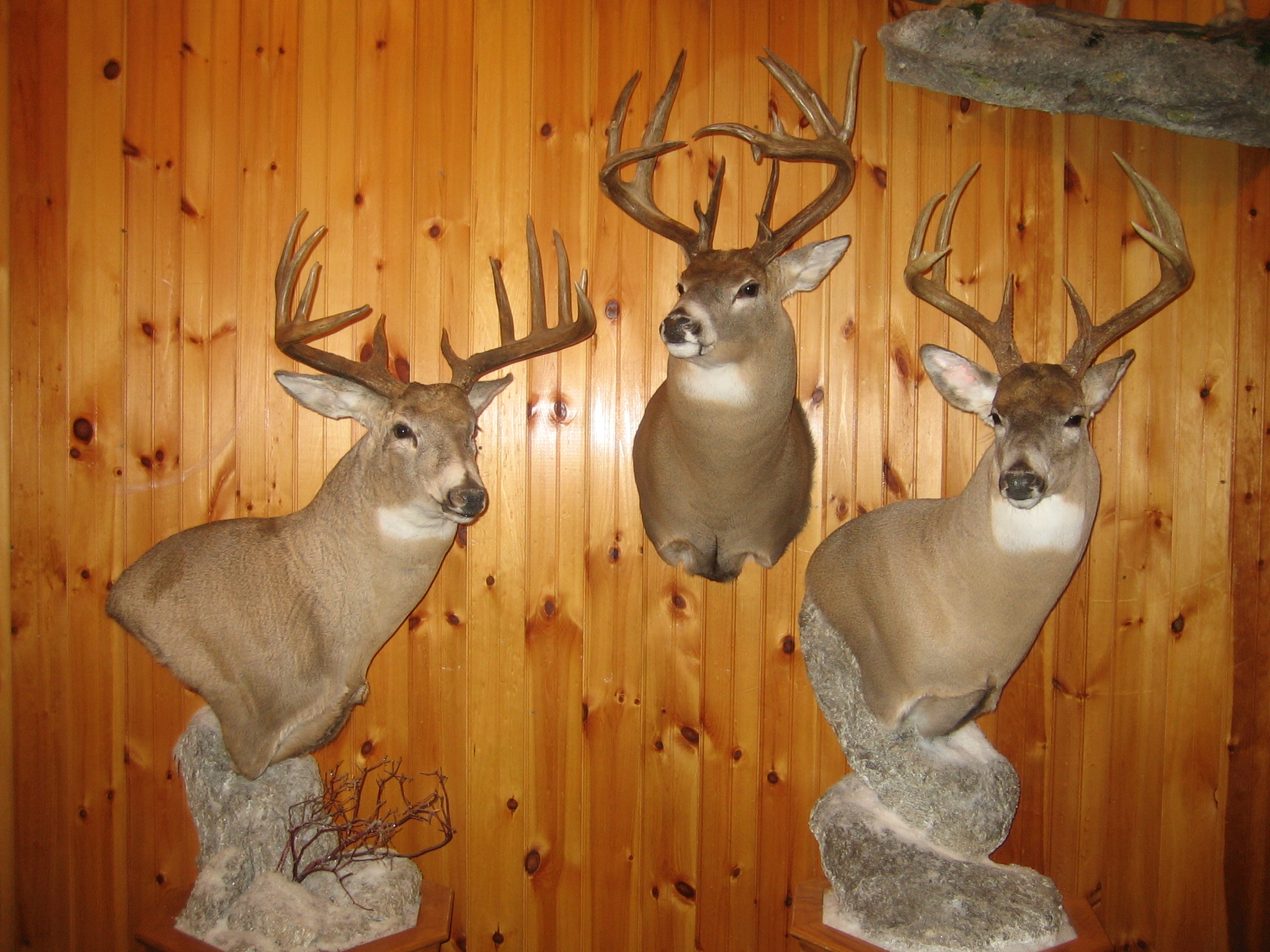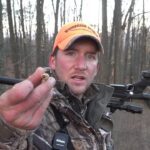The best deer taxidermist can transform your prized hunting trophy into a breathtaking work of art that captures the essence of your successful hunt. Whether you’re a seasoned hunter or a novice looking to preserve your first big game, this guide will provide you with all the insights and tips you need to find the perfect taxidermist for your needs.
Deer taxidermy is a specialized craft that requires a combination of technical skill, artistic talent, and a deep understanding of animal anatomy. In this guide, we’ll explore the different aspects of deer taxidermy, from the techniques used to the ethical considerations involved.
We’ll also provide you with a comprehensive list of questions to ask potential taxidermists and case studies of successful deer taxidermy projects to help you make an informed decision.
Deer Taxidermy

Deer taxidermy is the art of preserving and mounting the skin of a deer, typically for display or hunting trophies. It involves a complex process that requires skill, precision, and an understanding of animal anatomy.
The Process of Deer Taxidermy
The process of deer taxidermy typically involves the following steps:
- Skinning:The first step is to remove the skin from the deer’s body. This is done carefully to avoid damaging the hide.
- Fleshing:Once the skin is removed, the flesh and fat are removed from the hide. This is done using a variety of tools, including knives, scrapers, and brushes.
- Tanning:The hide is then tanned to preserve it. This involves treating the hide with chemicals that make it resistant to decay.
- Mounting:Once the hide is tanned, it is mounted on a form. The form is shaped to resemble the deer’s body, and the hide is attached to it using a variety of techniques.
- Finishing:The final step is to finish the mount. This may involve painting the hide, adding hair or fur, and creating a habitat for the mount.
Styles of Deer Taxidermy
There are a variety of different deer taxidermy styles, each with its own unique look and feel.
- Traditional taxidermy:This style of taxidermy aims to create a realistic representation of the deer. The hide is mounted on a form that is shaped to resemble the deer’s body, and the hide is painted to match the deer’s natural coloration.
- Artistic taxidermy:This style of taxidermy uses the deer’s hide as a canvas for creating a work of art. The hide may be painted, dyed, or otherwise altered to create a unique and eye-catching piece.
- Competition taxidermy:This style of taxidermy is designed to create a mount that will win competitions. The mounts are typically very realistic and detailed, and they often feature elaborate habitats.
Evaluating Deer Taxidermists
Selecting a skilled deer taxidermist is crucial for preserving your prized trophy. Here are some key criteria to consider when evaluating potential candidates:
Experience and Reputation
Experience plays a vital role in the quality of taxidermy work. Look for taxidermists with a proven track record of successful deer mounts. Positive reviews and testimonials from previous clients are valuable indicators of expertise and craftsmanship.
Factors to Consider
- Artistic Skills:Assess the taxidermist’s ability to create realistic and lifelike poses, capture facial expressions, and achieve fine details in the hide and antlers.
- Knowledge of Deer Anatomy:A thorough understanding of deer anatomy ensures that the mount accurately reflects the natural proportions and musculature of the animal.
- Materials and Techniques:Inquire about the materials and techniques used by the taxidermist. High-quality materials and proper preservation methods contribute to the longevity and durability of the mount.
- Communication and Collaboration:Effective communication is essential for discussing your vision and ensuring that the final product meets your expectations.
- Cost:While cost should not be the primary factor, it’s important to consider the value for money and the overall quality of the work being offered.
Techniques and Methods

Deer taxidermy involves a range of techniques and methods to preserve and mount a deer’s hide and create a lifelike representation of the animal. The process requires skill, precision, and a deep understanding of animal anatomy.
The first step in deer taxidermy is skinning, which involves carefully removing the hide from the animal’s body. This is done using sharp knives and requires a steady hand to avoid damaging the hide.
Fleshing
Once the hide is removed, it must be fleshed, which involves removing all the fat and muscle tissue from the underside of the hide. This is done using a fleshing knife or a fleshing machine, and it requires careful attention to detail to avoid damaging the hide.
Tanning
After the hide has been fleshed, it must be tanned to preserve it and make it pliable. There are various tanning methods, including chemical tanning, which uses chemicals to preserve the hide, and brain tanning, which uses the brains of the animal to tan the hide.
Artificial Eyes and Forms
Once the hide has been tanned, artificial eyes are inserted into the eye sockets to create a realistic look. The taxidermist will also use a form, which is a mold of the animal’s body, to shape the hide and create a lifelike mount.
Artistic Considerations
Deer taxidermy is not just a craft; it’s an art form. Taxidermists must have a deep understanding of animal anatomy, as well as a keen eye for detail and an appreciation for the beauty of nature. The best deer taxidermists are able to capture the deer’s natural appearance, creating mounts that are both realistic and lifelike.One
of the most important aspects of deer taxidermy is capturing the deer’s expression. The eyes are particularly important, as they can convey a wide range of emotions. Taxidermists must take great care to select the right eyes for each mount, and to position them correctly.
The deer’s body language is also important, as it can tell a story about the animal’s life. Taxidermists must pay attention to the way the deer is standing, its posture, and the position of its limbs.In addition to capturing the deer’s natural appearance, taxidermists must also be able to create a mount that is both durable and aesthetically pleasing.
The materials used in taxidermy must be able to withstand the test of time, and the mount must be constructed in a way that prevents it from sagging or falling apart. Taxidermists must also be able to create mounts that are visually appealing, using a variety of techniques to create depth and texture.Deer
If you’re looking for the best deer taxidermist, you’ll want to find someone who has experience with all types of deer, including the biggest fallow deer in the world . These deer can be incredibly challenging to mount, but a skilled taxidermist will be able to create a beautiful and lifelike piece of art that you can cherish for years to come.
After all, finding the best deer taxidermist is key to preserving your hunting memories in a stunning and realistic way.
taxidermy is a challenging but rewarding art form. The best deer taxidermists are able to create mounts that are both realistic and lifelike, capturing the beauty and majesty of these animals.
Creating Realistic and Lifelike Mounts, Best deer taxidermist
There are a number of techniques that taxidermists use to create realistic and lifelike mounts. One of the most important is the use of reference photos. Taxidermists will often take hundreds of photos of the deer they are working on, from all angles.
These photos are used to create a detailed pattern that the taxidermist will use to cut and sew the deer’s skin.Another important technique is the use of artificial muscles. These muscles are made of a variety of materials, including foam, clay, and even real muscle tissue.
They are used to give the mount a more realistic shape and to help it hold its pose.Taxidermists also use a variety of techniques to create the deer’s fur. They may use real fur, artificial fur, or a combination of both.
The fur is carefully attached to the mount, and it is often dyed or bleached to match the deer’s natural color.Finally, taxidermists use a variety of finishing touches to complete the mount. These touches may include painting the eyes, adding antlers, and creating a habitat for the deer.
By using all of these techniques, taxidermists are able to create mounts that are both realistic and lifelike.
Case Studies
Deer taxidermy involves the preservation and display of deer specimens. Case studies showcase the transformation of raw deer specimens into lifelike works of art. These studies provide valuable insights into the techniques, challenges, and solutions encountered by taxidermists during the process.
Successful Deer Taxidermy Projects
One successful deer taxidermy project involved a trophy white-tailed buck. The taxidermist meticulously recreated the deer’s muscular physique, paying attention to the fine details of its coat, antlers, and facial expression. The finished mount captured the deer’s majestic presence and is now a cherished keepsake for the hunter.
Another project involved a mule deer that had been struck by a vehicle. The taxidermist skillfully repaired the damage, restoring the deer’s natural appearance. The finished mount served as a testament to the taxidermist’s expertise and compassion for the animal.
Industry Trends
The deer taxidermy industry is constantly evolving, with new trends emerging all the time. These trends are driven by a number of factors, including advances in technology, changes in hunting practices, and the growing popularity of taxidermy as an art form.
One of the most significant trends in deer taxidermy is the increasing use of 3D scanning technology. This technology allows taxidermists to create highly accurate and detailed replicas of deer heads and bodies. 3D scans can be used to create custom mounts that are tailored to the specific needs of each hunter.
They can also be used to create educational exhibits and museum displays.
Emerging Technologies and Techniques
- 3D scanning technology is becoming increasingly popular in deer taxidermy.
- Airbrushing techniques are being used to create more realistic and lifelike mounts.
- New materials are being developed that are more durable and resistant to damage.
Another trend in deer taxidermy is the growing popularity of airbrushing techniques. Airbrushing allows taxidermists to create more realistic and lifelike mounts. Airbrushing can be used to add details such as veins, muscles, and fur texture. It can also be used to create custom paint jobs that match the specific coloration of a deer.
Shaping the Industry
These trends are shaping the deer taxidermy industry in a number of ways. First, they are making it possible to create more realistic and lifelike mounts. This is increasing the popularity of taxidermy as an art form. Second, these trends are making it easier for hunters to get custom mounts that are tailored to their specific needs.
This is making taxidermy more accessible to a wider range of hunters.
If you’re a hunter or a taxidermist, you’ll want to know about the best deer taxidermist in your area. A good taxidermist can make your trophy deer look lifelike, and they can also help you with other hunting-related projects, such as mounting antlers or creating a custom diorama.
If you’re looking for replacement ears for your Flambeau deer decoy, you can find them online at Adams Report . They have a wide selection of replacement ears to choose from, so you’re sure to find the perfect ones for your decoy.
Once you’ve found the best deer taxidermist in your area, you can be sure that your trophy deer will be mounted to perfection.
Conservation and Ethics: Best Deer Taxidermist
Deer taxidermy plays a significant role in conservation by preserving specimens for scientific research and educational purposes. It allows scientists to study animal anatomy, behavior, and population dynamics without harming live animals.
Ethical considerations are paramount in hunting and taxidermy. Hunters must adhere to fair chase principles and ensure the humane treatment of animals. Taxidermists have a responsibility to create realistic and respectful representations of the animals they preserve.
Taxidermy in Scientific Research
- Taxidermied specimens provide valuable data for researchers studying animal anatomy and morphology.
- Museums and universities use taxidermied specimens for educational exhibits and comparative studies.
- Taxidermy can contribute to conservation efforts by providing specimens for population surveys and genetic analysis.
Closing Summary

Finding the best deer taxidermist is crucial for preserving your hunting memories and creating a lasting legacy. By following the tips and advice Artikeld in this guide, you can ensure that your trophy is transformed into a masterpiece that you’ll cherish for generations to come.
FAQ Corner
What are the key factors to consider when choosing a deer taxidermist?
Experience, reputation, and artistic style are all important factors to consider when choosing a deer taxidermist.
How much does deer taxidermy cost?
The cost of deer taxidermy varies depending on the size of the animal, the complexity of the mount, and the experience of the taxidermist.
What is the best way to prepare a deer hide for taxidermy?
To prepare a deer hide for taxidermy, it should be skinned and fleshed as soon as possible after the animal is harvested.



